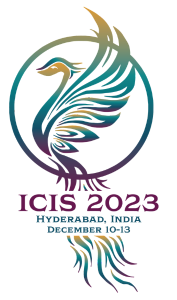AI in Business and Society
Loading...
Paper Number
2540
Paper Type
Completed
Description
Artificial Intelligence’s (AI) potential to augment knowledge workers' jobs brings about significant transformation in their work, permeating their entire job beyond the automated tasks. Consequently, their established control perceptions can be disrupted. We therefore propose a model of worker adaptation to the AI work environment via personal control processes aimed at aligning the environment and the self. The Human-in-Control (HiC) model is a dialectical process of trust in AI’s task execution ability and direct control over tasks that synthesizes in an expectation of delegation success leading to one of four control processes—expansive, opportunistic, investigative, preventive, and disengaging. The reached control state ranges from augmenting to reducing or, in extreme cases, slides down to uncontrollability. These states are transient, with feedback potentially prompting adaptive recalibration and state changes. Our study introduces personal control as an adaptive process in augmentation, expanding adaptation’s scope and guiding human-centered empirical investigations of job-wide adaptation.
Recommended Citation
Afiouni, Rania and Pinsonneault, Alain, "Human-in-Control: A Human-Centered Model of Adaptation to AI Augmentation" (2023). ICIS 2023 Proceedings. 2.
https://aisel.aisnet.org/icis2023/aiinbus/aiinbus/2
Human-in-Control: A Human-Centered Model of Adaptation to AI Augmentation
Artificial Intelligence’s (AI) potential to augment knowledge workers' jobs brings about significant transformation in their work, permeating their entire job beyond the automated tasks. Consequently, their established control perceptions can be disrupted. We therefore propose a model of worker adaptation to the AI work environment via personal control processes aimed at aligning the environment and the self. The Human-in-Control (HiC) model is a dialectical process of trust in AI’s task execution ability and direct control over tasks that synthesizes in an expectation of delegation success leading to one of four control processes—expansive, opportunistic, investigative, preventive, and disengaging. The reached control state ranges from augmenting to reducing or, in extreme cases, slides down to uncontrollability. These states are transient, with feedback potentially prompting adaptive recalibration and state changes. Our study introduces personal control as an adaptive process in augmentation, expanding adaptation’s scope and guiding human-centered empirical investigations of job-wide adaptation.
When commenting on articles, please be friendly, welcoming, respectful and abide by the AIS eLibrary Discussion Thread Code of Conduct posted here.



Comments
10-AI